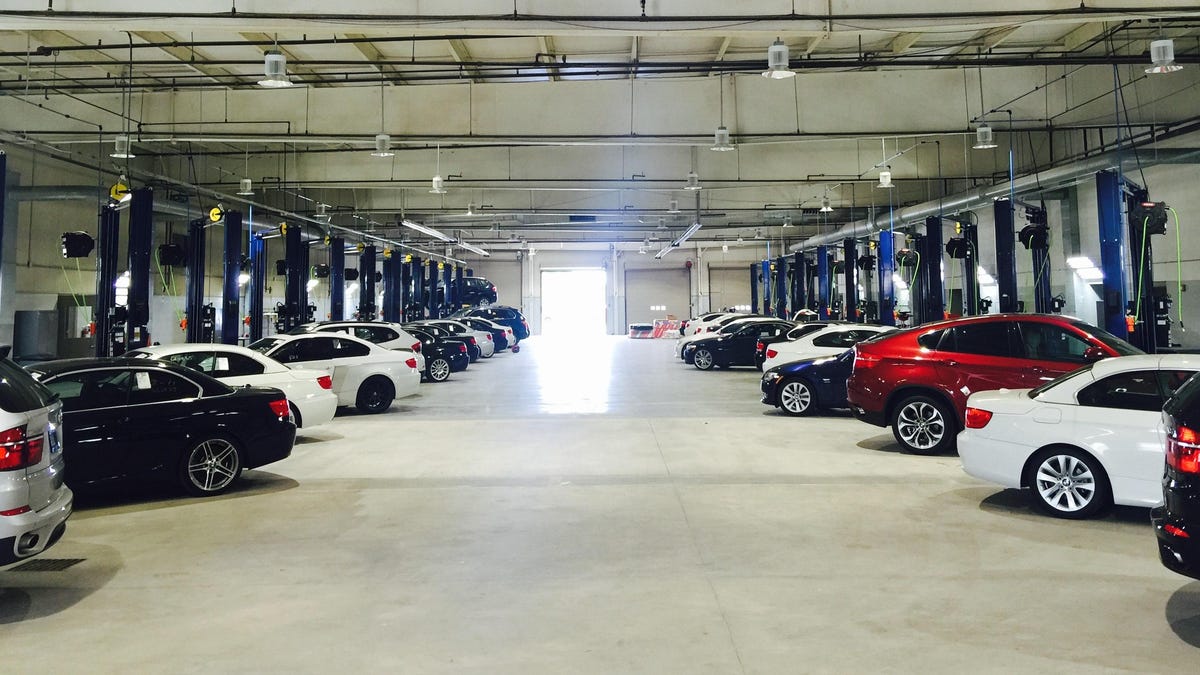Where used cars really come from
The future of a used car is determined in 45 seconds.

That sea of used cars on a dealer's lot suggests they came from trade-ins, but that's often not the case. The little-seen world of wholesale auto auctions is where the secret life of used cars plays out: It's where the companies that sell used cars come to get them.
I recently spent the morning at the Manheim SF Bay auction facility in industrial Hayward, California. It's sort of a cross between a carnival, a stockyard and a car show. Hundreds of cars come in as trade-ins, lease returns, insurance totals, retired rentals or company fleets to find a buyer who will later sell the car to you.
Far from the ooh-and-ahh atmosphere of a collector car auction like Pebble Beach, this auction is all about efficiency; no spectators or retail buyers allowed. Savvy wholesale bidders crowd a series of 10 lanes as late-model cars come through them simultaneously, with condition data displayed on an overhead screen and in marker on the windshield. As the car rolls in front of an elevated auctioneer stand, the fast banter begins, bid numbers are flicked and the sold car rolls out a door at the other end. The whole process takes about 45 seconds per vehicle. In a few hours the car is on a truck to the bidder's lot, where it gets marked up and sold to you.
Remember how you got your last car cleaned up and detailed to get top dollar when you traded it in? Don't bother next time. Auction sites like these typically have huge reconditioning shops attached to them where paint, tires, brakes, glass and basic engine work are all handled as a matter of course. That Armor All you smeared on the dash isn't even noticed here.
Wholesale auto auctions have been around for about 80 years but change is now happening like never before. Crossovers and trucks are starting to flood auctions a few years after they took over the new vehicle market, more and more bidders are doing so via an app or laptop without ever seeing the car, and bidders are increasingly focused on what will appeal to millennials since the average age of a new car buyer is 51.7 years old and younger buyers increasingly discount the idea of owning anything new if something used will work as well for less money.
Used car sales are a much bigger industry than new vehicles and deeply rooted in the art of residual value calculation, which in turn drives lease and purchase finance rates, new car pricing, factory incentives and insurance premiums. In 2017, US light vehicle sales totaled 39.3 million for used cars, more than double the 17.1 million new cars sold that year.
The wholesale auto auction world functions a lot like a stock exchange, dynamically balancing demand and pricing. Not only is price settled here, but also location and brand appeal, with many cars being trucked to a zip code or dealer brand where they will sell for the most money soonest. A Maserati dealer with an F-150 trade-in might unload it here to a dealer in a rural county, or an eight-year-old car traded to a Mercedes dealer will be auctioned here so it doesn't detract from that dealer's brand image. That's a big reason why you probably never saw your last trade-in on the dealer's lot when you drove by a few days later.

